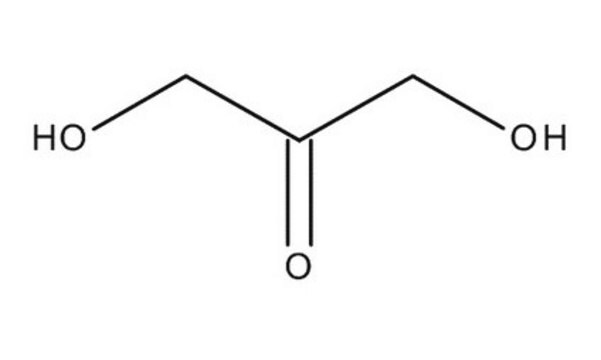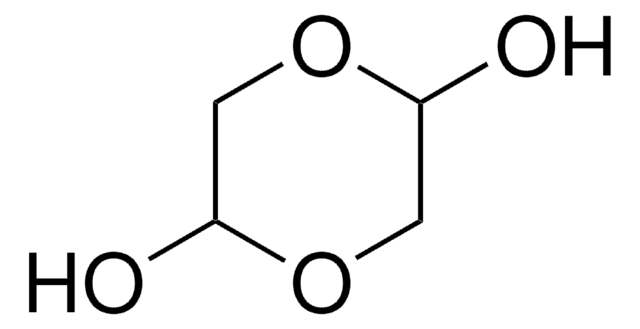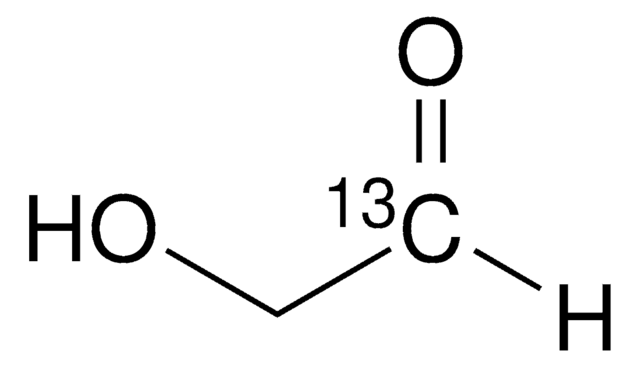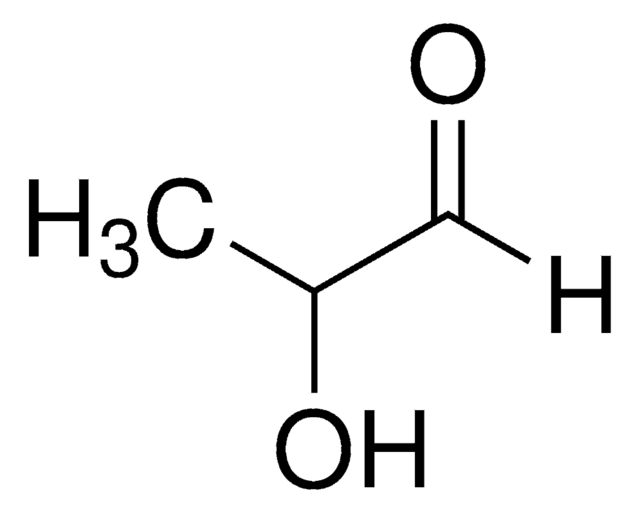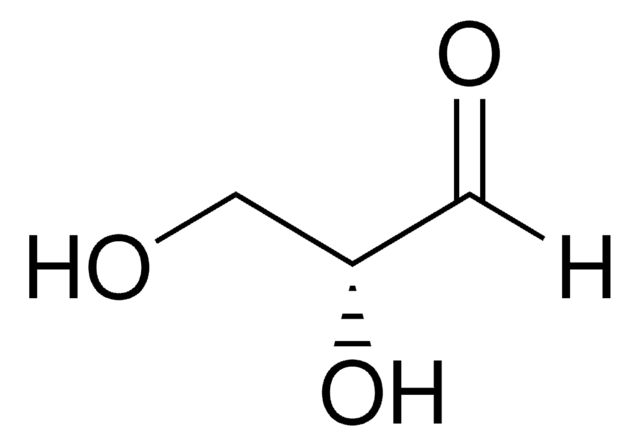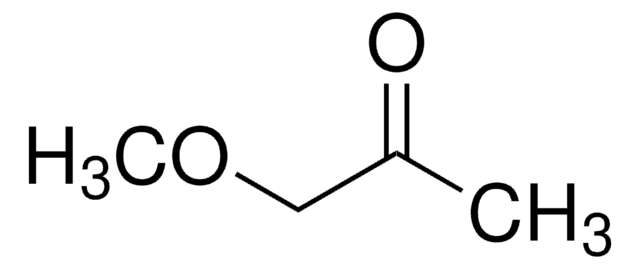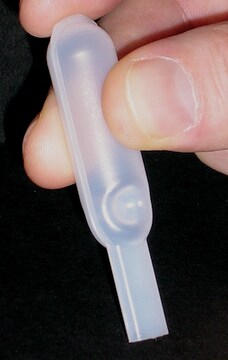138185
Hydroxyacetone
contains ≤500 ppm sodium carbonate as stabilizer, technical grade, 90%
Synonym(s):
1-Hydroxy-2-propanone, Acetol
Sign Into View Organizational & Contract Pricing
All Photos(1)
About This Item
Linear Formula:
CH3COCH2OH
CAS Number:
Molecular Weight:
74.08
Beilstein:
605368
EC Number:
MDL number:
UNSPSC Code:
12352100
PubChem Substance ID:
NACRES:
NA.22
Recommended Products
grade
technical grade
Assay
90%
form
liquid
contains
≤500 ppm sodium carbonate as stabilizer
refractive index
n20/D 1.425 (lit.)
bp
145-146 °C (lit.)
mp
−17 °C (lit.)
solubility
water: miscible
density
1.082 g/mL at 25 °C (lit.)
functional group
hydroxyl
ketone
storage temp.
2-8°C
SMILES string
CC(=O)CO
InChI
1S/C3H6O2/c1-3(5)2-4/h4H,2H2,1H3
InChI key
XLSMFKSTNGKWQX-UHFFFAOYSA-N
Looking for similar products? Visit Product Comparison Guide
Related Categories
General description
Hydroxyacetone (Acetol) is important for the manufacture of polyols, acrolein, dyes and skin tanning agents. It undergoes asymmetric reduction to yield (R)-1,2-propanediol in the presence of microbial cell catalyst.
Application
Hydroxyacetone was used to study aerobic oxidation of glycerol and propanediol over metal oxide supported gold nanoparticles in methanol.
Signal Word
Warning
Hazard Statements
Precautionary Statements
Hazard Classifications
Flam. Liq. 3 - Muta. 2
Storage Class Code
3 - Flammable liquids
WGK
WGK 1
Flash Point(F)
133.7 °F - closed cup
Flash Point(C)
56.5 °C - closed cup
Personal Protective Equipment
dust mask type N95 (US), Eyeshields, Gloves
Choose from one of the most recent versions:
Already Own This Product?
Find documentation for the products that you have recently purchased in the Document Library.
Customers Also Viewed
Hongliang Zhu et al.
Bioresource technology, 149, 238-243 (2013-10-12)
Escherichia coli Lin43 is a strain which has some mutations in glycerol kinase (GlpK) and the repressor for the glycerol 3-phosphate regulon (GlpR). When exposed to glycerol, it quickly accumulates lethal levels of methylglyoxal, which is a precursor of acetol;
Ganesh Sriram et al.
Metabolic engineering, 9(5-6), 442-451 (2007-09-25)
Biosynthetically directed fractional (13)C labeling, a popular methodology of metabolic flux analysis, involves culture on a mixture of (13)C and (12)C substrates and preparation a 'metabolic flux analyte' (typically protein hydrolysate) from the biomass. Metabolic flux analytes prepared from complex
Chen Liu et al.
Organic letters, 13(19), 5248-5251 (2011-09-10)
An efficient direct asymmetric aldol reaction between hydroxyacetone and β,γ-unsaturated α-keto esters has been successfully developed. In the presence of 9-amino-9-deoxy-epi-cinchonine and trifluoroacetic acid, the direct aldol reaction of O-protected hydroxyacetone proceeded in a highly enantioselective manner, affording the desired
Terry J Dillon et al.
Physical chemistry chemical physics : PCCP, 8(2), 236-246 (2006-02-17)
Absolute rate coefficients for the title reaction, HO + HOCH(2)C(O)CH(3)--> products (R1) were measured over the temperature range 233-363 K using the technique of pulsed laser photolytic generation of the HO radical coupled to detection by pulsed laser induced fluorescence.
Junsang Ko et al.
Journal of bacteriology, 187(16), 5782-5789 (2005-08-04)
Methylglyoxal (MG) is a toxic metabolite known to accumulate in various cell types. We detected in vivo conversion of MG to acetol in MG-accumulating Escherichia coli cells by use of (1)H nuclear magnetic resonance ((1)H-NMR) spectroscopy. A search for homologs
Our team of scientists has experience in all areas of research including Life Science, Material Science, Chemical Synthesis, Chromatography, Analytical and many others.
Contact Technical Service